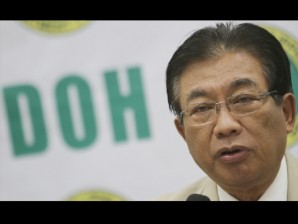DOH: Where are the poor?
MANILA, Philippines—The Department of Health (DOH) has billions of pesos to spend on health insurance for the poor but has a problem: It doesn’t know where to find the poor.
Apparently reacting to criticism that President Aquino’s vaunted universal health insurance program was a sham—judging by the number of poor people jamming charity wards in government hospitals and often dying there due to lack of medicine—Health Secretary Enrique Ona explained at a press briefing on Wednesday that they “could not locate the addresses of the poor in order to deliver their PhilHealth cards.”
He said the Philippine Health Insurance Corp. (PhilHealth) was currently spending P1.2 billion a week in hospital reimbursements and was ready to increase this amount even further to help more poor Filipinos.
‘Very mobile’
The problem, according to Ona, is that many of the 10.2 million poor families that PhilHealth plans to cover by 2014 change their home address often and apparently do not know that they are already covered by the government universal health insurance program.
Article continues after this advertisement“It’s so easy to say we have all of our poor covered but you must remember these are the poorest Filipino families. They are the least informed, the least educated, and are very mobile,” Ona said.
Article continues after this advertisement“During our first salvo, right away we could not find 12 percent of our poor families. Even now, that remains a problem because the poor are very mobile. For example, if construction workers find work in Laguna, they would stay there,” he said.
“But after six months, they could transfer to Samar because that’s where they find their next work. So, you must look for them, inform them, and give them their (PhilHealth) card. So in short, just informing them is a major obstacle, a major problem,” he added.
Increased budget
“The budget for 2013 is P12.5 billion (for premium payments) to enroll our poor (but) that will increase to P34.5 billion for next year,” Ona said.
“In terms of benefit payments, last year there were 4.8 million claims amounting to P47 billion. That means PhilHealth gave hospitals P47 billion for 2012 or P17 billion more than the P30 billion it gave them in 2010,” he said.
“As of now, PhilHealth is already paying P1.2 billion per week in reimbursements so you can just imagine the money going to our poor. We expect the total this year to reach nearly P70 billion,” he added.
Ona sought the help of the media to inform poor Filipinos that they can now enroll with PhilHealth because government was getting more funds for health services after the passage of the sin tax law.
‘Mapping’ the poor
However, Ona admitted the Department of Social Welfare and Development (DSWD) and local government units were still in the process of mapping out where the country’s “poorest” families reside. Also, DSWD and the economic planning department had yet to advise them what income brackets would qualify one to be a subsidized PhilHealth beneficiary.
He said this “mapping” was important because PhilHealth wanted to increase its coverage for the poorest Filipinos from 5.4 million families to 10.2 million families by next year.
He said PhilHealth had already identified 23 most common medical cases—including dengue, asthma, caesarean section, cataract operations—and would be providing up to P38,000 in assistance to poor PhilHealth members.
For early “catasrophic diseases” like early-stage breast cancer or low- to intermediate-risk prostate cancer, poor PhilHealth members could go to 22 government hospitals nationwide and get up to P600,000 in assistance.
It has recently occurred to health officials to look in their own backyard charity wards for the poor.
Ona said the agency is now “preparing a program that would allow poor sick people to go to a government hospital and apply then and there.
